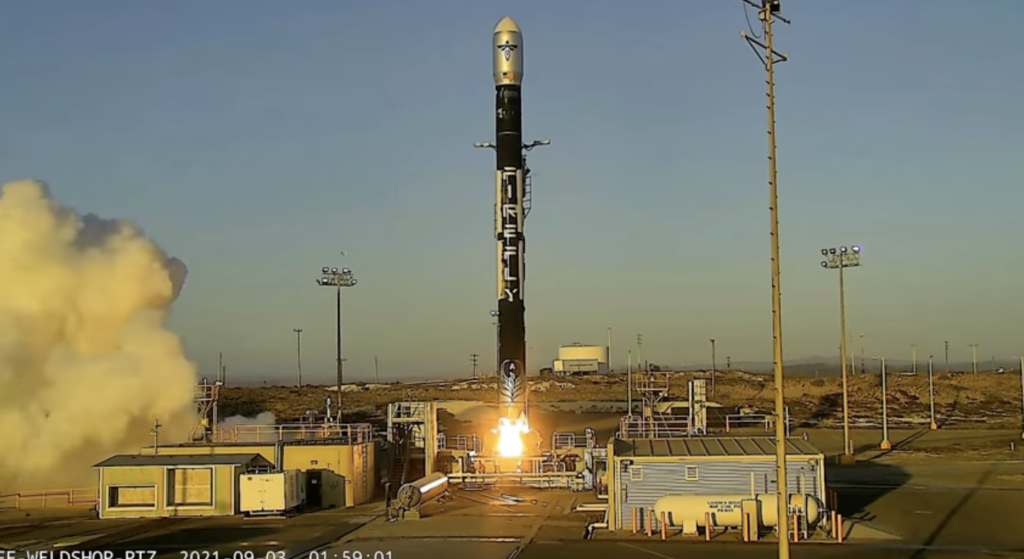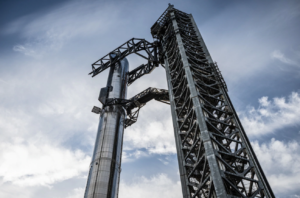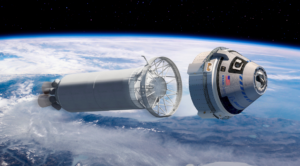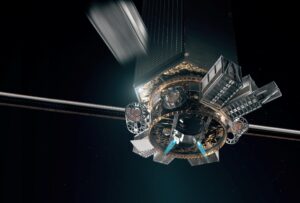
Firefly Aerospace New Launch Contract, 18 Scheduled Launches, Update, & More
Not even a week ago we watched the second ever Alpha flight test and the first time both Firefly Aerospace and the Alpha launch vehicle successfully reached orbit. However, while one launch is great, Firefly has much bigger plans for the future including consistent and reliable access to space with this launch vehicle among others. In order to do that, they need more launch contracts and missions.
This being said, just yesterday morning the company announced a brand new launch contract with the U.S. Space Force. Specifically, Firefly was selected by the U.S. Space Force’s Space Systems Command, to provide launch services for SSC’s VICTUS NOX mission. This brings the company’s schedule to 6 Alpha launches set for 2023, and another 12 in 2024.
It’s clear that Firefly Aerospace is full steam ahead after the recent mission with no plan of slowing down. Now that they have a unique capability to reach orbit, they intend to use it to its full potential with a busy launch schedule starting in the coming months. Here I will go more in-depth into the recent launch contract, Firefly’s upcoming launch schedule, what to expect, and more.
New Contract & Schedule

Just yesterday Firefly tweeted saying, “Announcement: Firefly has been selected by The U.S. Space Force’s (USSF) Space Systems Command (SSC) to provide launch services for SSC’s VICTUS NOX mission to demonstrate end-to-end Tactically Responsive Space capabilities.” This mission will demonstrate an end-to-end Tactically Responsive Space capability, including the launch segment, space segment, ground segment, and on-orbit operations. VICTUS NOX will perform a Space Domain Awareness (SDA) mission from Low-Earth Orbit (LEO). “We are honored to be chosen by Space Force for this important national security mission,” said Bill Weber, CEO of Firefly Aerospace. “Now more than ever, our country needs the ability for quick response capabilities to combat threats in space. Our Alpha launch vehicle is designed to drive affordable, rapid access to space. We look forward to working with Lt. Col. Justin Beltz and Lt. Col. MacKenzie Birchenough along with their experienced team at Space Force to help bring this innovation to the national security community.”
“This end-to-end mission will demonstrate the United States’ ability to rapidly place an asset on-orbit when and where we need it, ensuring we can augment our space capabilities with very little notice,” said Lt. Col. MacKenzie Birchenough, Materiel Leader at SSC’s Space Safari. The goal of the program is to bolster the United States “responsive space” capabilities allowing for the fast deployment of satellites during a conflict. “Space Systems Command is committed to addressing threats in the space domain and VICTUS NOX will provide space capabilities on an unprecedented timeline,” stated Lt. Col. Justin Beltz, SSC’s Small Launch and Targets Division, chief. “The United States’ launch industry is the envy of the world, innovating to bring more speed and more capability at a lower price.”
This contract announcement comes in addition to more updates from Firefly on the recent launch success and busy schedule going forward. Specifically, right now, Firefly is completing the Acceptance Testing Protocol (ATP) for its Alpha 3 vehicle in preparation for its upcoming NASA VCLS Demo 2-FB ELaNa 43 launch. Back in December 2020, the company was awarded this launch opportunity from NASA. The mission involves a launch of two CubeSat constellations to a 550 km Sun-Synchronous Orbit, separated by a minimum of 10 degrees in plane change. In addition, Firefly is continuing the production of multiple rockets at its Texas manufacturing facilities using all the lessons learned from existing flights and testing. Currently, Firefly is scheduled for six Alpha launches to take customer payloads to space in 2023, and 12 more in 2024.
Firefly also released more information regarding the recent successful mission. The company pointed out that with the success of this mission, Firefly is now the first company to launch and reach orbit from US soil in only its second attempt. Firefly also becomes one of the first US commercial space companies with a rocket ready to take customers to space in the highly desired 1300kg payload lift class. “With the success of this flight, Firefly has announced to the world there is a new orbital launch vehicle, available today, with a capacity that is pivotal to our commercial and government customers,” said Bill Weber, Firefly CEO. “Proving our flight and deployment capabilities on only our second attempt is a testament to the maturity of our technology and the expertise of our team. This is an exciting day at Firefly, and we have many, many more ahead. I could not be more excited for the Firefly team.”
Future Launch Plan

Now that we know more about Firefly’s new launch contract and additional details regarding the first successful launch, we can take a closer look at the company’s busy future schedule and launch vehicles. As partially mentioned prior, the next launch will be with NASA apart of the VLCS Demo 2 contract. This launch is scheduled to happen only around two months from now on November 29th, from Vanderberg Space Force Base. This being said, this date is subject to change and could be pushed back into December or early 2023. This also has to do with the announcement of 6 scheduled launches in 2023 and 12 in 2024. Unfortunately, this is practically all the information Firefly released regarding these future launches. Either way, based on this update, we are seeing the company move toward a very ambitious launch cadence in a short period of time. The time between the first Alpha flight and the second was just over a year. While these were the first launches ever and problems needed to be fixed, it still took a significant amount of time. The current schedule suggests that only months from now we should expect to see a launch every two months and the next year one per month. In order to make this a reality Firefly will need to speed up production and testing significantly.
One example of a specific upcoming mission once again has to do with NASA. Only a few weeks ago in the middle of September, Firefly tweeted saying, “News Alert: Firefly has been included as a sole source addition to NASA’s Venture-Class Acquisition of Dedicated and Rideshare (VADR) contract.” Specifically, Firefly was picked to provide launch services for the agency’s VADR missions in the 500-1000 kg grouping utilizing its Alpha rocket. The fixed-price indefinite-delivery/indefinite-quantity contract has a five-year ordering period with a maximum total value of $300 million across all contracts.
Launch vehicle capabilities for the VADR contract are divided into three categories: below 500 kg, 500-1000 kg, and above 1000 kg, with a specification that there be multiple providers for each category. NASA/KSC (Kennedy Space Center) determined that there was only one provider for the 500-1000kg category currently on the VADR contract and posted an intent to enter sole source negotiation with Firefly to fulfill the multiple provider need. Further, NASA noted that Firefly is the only launch vehicle provider in this grouping that has completed development and conducted its first test launch. “Firefly has had a long-standing relationship with NASA and is committed to providing NASA and other U.S. government entities with responsive, repeatable, reliable space transportation services,” stated Jason Mello, President, Firefly STS, LLC. “We are honored to be included in this award and to be one of two vehicles in this class to meet the NASA’s Launch Services Program demand for assured access to space.”
The VADR contract will provide a broad range of Federal Aviation Administration-licensed commercial launch services capable of delivering payloads ranging from CubeSats to Class D missions to a variety of orbits. These small satellites and Class D payloads tolerate relatively high risk and serve as an ideal platform for technical and architecture innovation, contributing to NASA’s science research and technology development. This VADR award also builds on their previous $9.8M award of the VCLS Demo 2, which is currently being prepared for integration and will be flown on their upcoming Alpha Flight 3 mission planned for later this year. It’s very clear looking at reports from Firefly Aerospace and all the different contracts being announced, that the company is going full steam ahead toward an extremely busy future. With the most recent successful launch, they plan to capitalize on their newfound capability, and provide consistent launch services with the space industry. However, just because a company reached orbit once, does not mean it’s guaranteed smooth sailing from here. Hopefully, Firefly can continue its success and become a valuable launch provider for many different companies and agencies.
Conclusion
Firefly Aerospace managed to reach orbit for the first time just around 1 week ago. Only days later, they announced a new contract with the U.S. Space Force along with a future schedule including 6 launches in 2023 and 12 in 2024. If we are lucky, the next launch is just under two months away in later November with NASA. We will have to wait and see how it progresses and the impact it has on the space industry.



